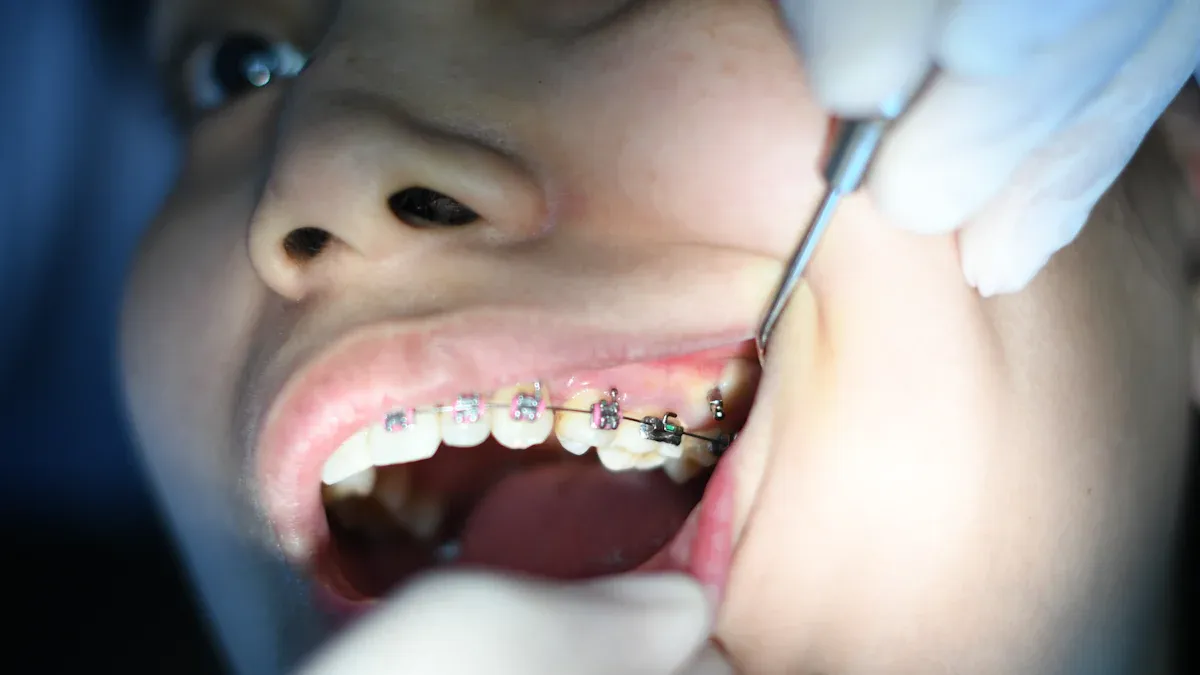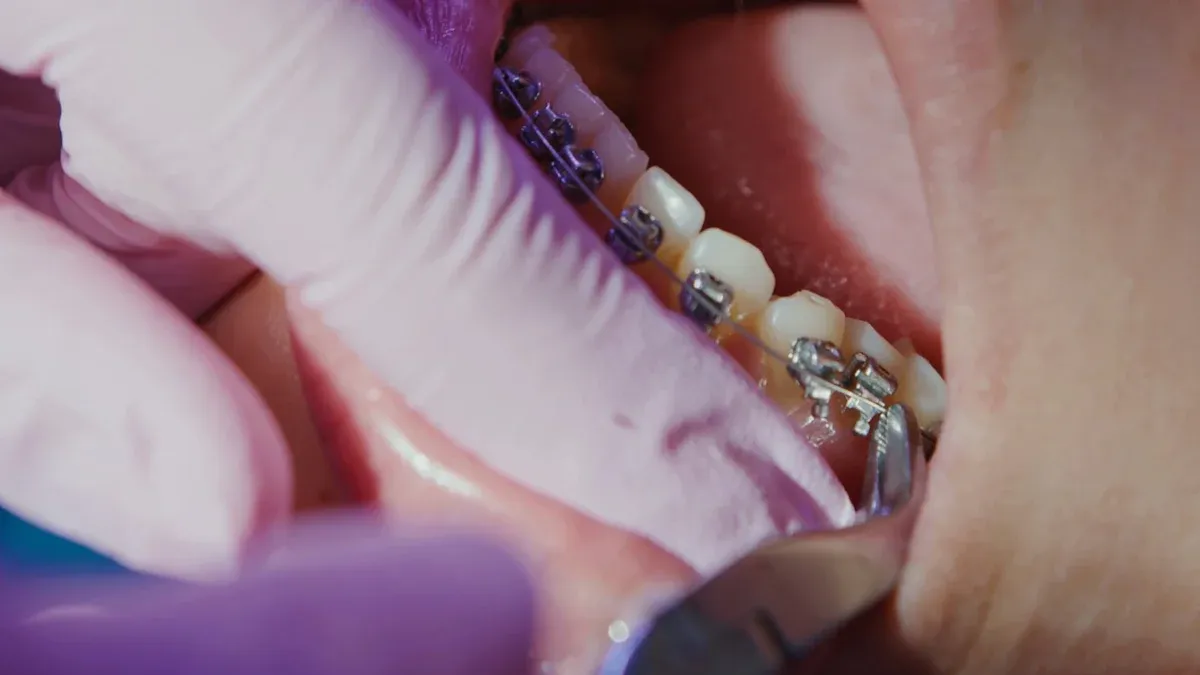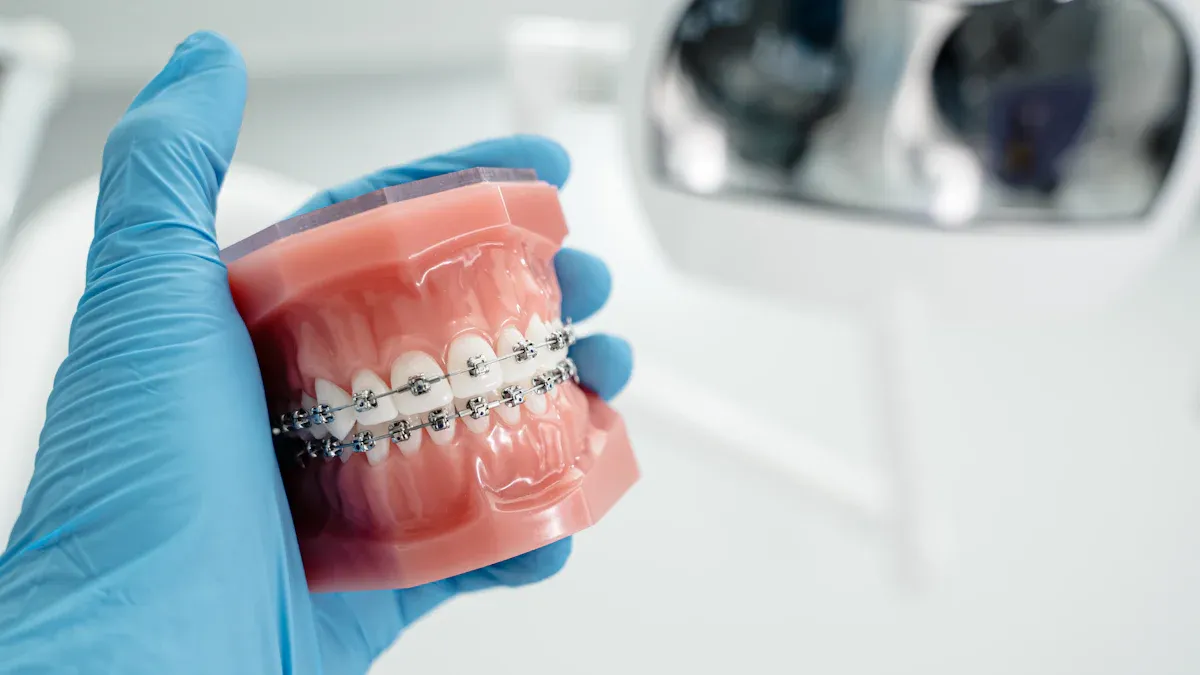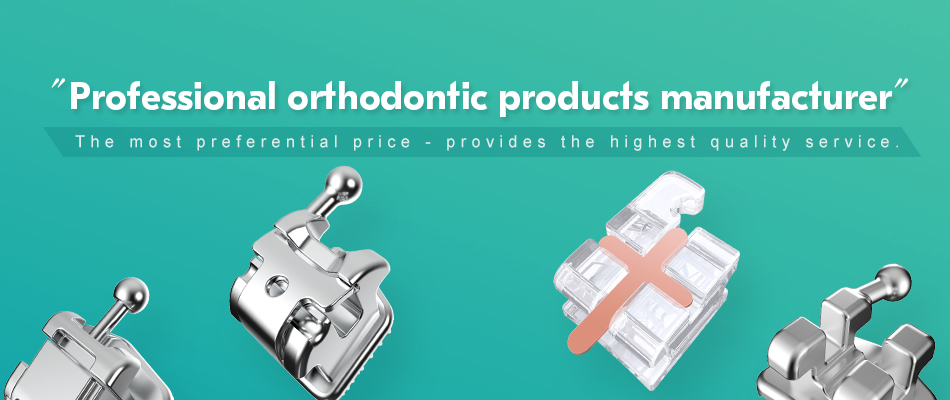
When I first learned about orthodontic brackets, I was amazed by their effectiveness. These tiny tools work wonders for straightening teeth. Did you know that modern orthodontic brackets can achieve up to a 90% success rate for mild to moderate misalignments? Their role in creating healthier smiles is undeniable—and worth exploring further.
Key Takeaways
- Orthodontic brackets help straighten teeth and improve dental health. They gently push teeth into the right position over time.
- Newer brackets, like self-ligating ones, are more comfortable. They cause less rubbing, so treatment hurts less and feels better.
- Brackets work for kids, teens, and adults. Adults can choose clear options like ceramic braces or Invisalign to get a better smile easily.
What Are Orthodontic Brackets?

Orthodontic brackets are the unsung heroes of dental correction. These small, durable devices attach to the surface of your teeth and work in tandem with wires to guide them into proper alignment. While they may seem simple, their design and functionality are the result of decades of innovation and research.
The Role of Orthodontic Brackets
I’ve always been fascinated by how orthodontic brackets transform smiles. They act as anchors, holding the archwire in place and applying consistent pressure to move teeth gradually. This process not only straightens teeth but also improves bite alignment, which can enhance overall oral health. Brackets are essential for controlling the direction and speed of tooth movement, ensuring precise results.
What’s even more impressive is how modern brackets have evolved. For example, self-ligating brackets, made from hard 17-4 stainless steel, use advanced metal injection molding (MIM) technology. This design reduces friction, making treatments more efficient and comfortable. It’s amazing how such a small device can have such a big impact on your smile and confidence.
Types of Orthodontic Brackets
When it comes to orthodontic brackets, you have several options to choose from, each with unique benefits. Here’s a breakdown of the most common types:
- Traditional Metal Braces: These are the most reliable and cost-effective option. They’re highly effective for correcting a wide range of misalignments. However, their metallic appearance makes them more noticeable.
- Ceramic Braces: If aesthetics are a priority, ceramic braces are a great choice. Their tooth-colored brackets blend in with your teeth, making them less visible. Keep in mind, though, they can be more expensive and prone to discoloration.
- Lingual Braces: These braces are placed behind your teeth, keeping them completely hidden from view. While they offer a cosmetic advantage, they may take longer to adjust to and can affect speech initially.
- Invisalign: For those who prefer flexibility, Invisalign uses clear, removable aligners. They’re comfortable and convenient but may not be suitable for severe misalignments.
To help you understand the differences in materials, here’s a quick comparison of their mechanical properties:
| Bracket Type | Mechanical Properties Comparison |
|---|---|
| Polymer | Lower mechanical properties in torque loss, fracture resistance, hardness, and torsional creep compared to metal. |
| Metal | Higher mechanical properties, minimal torque deformation. |
| Ceramic-Reinforced Polymer | Moderate torque deformation, better than pure polymer but less than metal. |
I’ve also learned that zirconia brackets, especially those with 3 to 5 mol% YSZ, offer superior dimensional accuracy compared to traditional alumina ceramic brackets. This makes them a fantastic option for those seeking durability and precision.
Choosing the right type of orthodontic brackets depends on your specific needs and preferences. Your orthodontist can guide you in selecting the best option for your treatment plan.
Surprising Facts About Orthodontic Brackets

Brackets Are Not the Same as Braces
Many people think brackets and braces are interchangeable terms, but they’re not. Brackets are just one part of the braces system. They attach to the teeth and work with wires to guide alignment. Braces, on the other hand, refer to the entire setup, including brackets, wires, and elastics.
I’ve noticed that different types of braces offer unique experiences. For example:
- Traditional braces use brackets and elastic bands, making them sturdy and reliable for various orthodontic needs.
- Self-ligating braces feature a clip design that reduces food traps and improves oral hygiene.
- Comfort levels vary. Some users report less pain with self-ligating braces compared to traditional ones.
- Aesthetic options differ. Traditional braces allow colorful elastics, while self-ligating braces have fewer color choices.
Understanding these differences can help you choose the right orthodontic treatment for your needs.
.jpg)
Modern Brackets Are More Comfortable
Gone are the days of bulky, uncomfortable brackets. Modern orthodontic brackets are designed with patient comfort in mind. I’ve seen how self-ligating brackets (SLBs) have revolutionized orthodontic care. They use advanced technology to reduce friction, which means less discomfort during treatment.
Here’s what makes modern brackets stand out:
- SLBs are associated with higher levels of comfort compared to older versions.
- Patients report greater satisfaction with SLB systems due to their smoother design.
These advancements make orthodontic treatment more bearable and even enjoyable for many patients.
Brackets Can Be Customized
Customization is one of the most exciting developments in orthodontics. While traditional brackets are effective, customized brackets offer a tailored approach to treatment. I’ve read that these brackets can be designed to fit the unique shape of your teeth, potentially improving precision.
However, it’s important to weigh the pros and cons. Research shows that the clinical effectiveness of customized brackets is similar to non-customized ones for most outcomes. While they offer theoretical benefits, such as improved treatment results, barriers like cost and planning time can make them less accessible.
If customization appeals to you, discuss it with your orthodontist to see if it’s the right choice for your smile.
Brackets Require Special Care
Taking care of orthodontic brackets is crucial for their durability and effectiveness. I’ve learned that using protective agents, like pre-reacted glass-ionomer and silver diamine fluoride, can make a big difference. These treatments strengthen the bond between brackets and teeth while preserving enamel.
Special care doesn’t stop there. Proper oral hygiene is essential to prevent decalcification and acid damage. Brushing carefully around brackets and avoiding sticky or hard foods can help keep them in top condition.
With the right care, orthodontic brackets can last throughout your treatment and deliver the results you’re hoping for.
Misconceptions About Orthodontic Brackets
Brackets Are Painful
When I first considered orthodontic treatment, I worried about pain. Many people believe brackets cause unbearable discomfort, but that’s not true. While some soreness is normal after adjustments, it’s far from the excruciating pain many imagine.
A clinical trial revealed no significant difference in discomfort between self-ligating brackets and traditional braces at various time points, including 1, 3, and 5 days after adjustments. This surprised me because I had heard self-ligating brackets were supposed to be less painful. Meta-analyses also confirmed that neither type of bracket offers a clear advantage in reducing discomfort during the first week of treatment.
What I’ve learned is that the initial soreness fades quickly. Over-the-counter pain relievers and soft foods can help during this period. Most patients adapt within days, and the benefits of a straighter smile far outweigh the temporary discomfort.
Tip: If you’re worried about pain, talk to your orthodontist. They can recommend strategies to make your treatment more comfortable.
Brackets Are Only for Teens
I used to think braces were just for teenagers. It turns out, that’s a common misconception. Orthodontic brackets work for people of all ages. Adults now make up a significant portion of orthodontic patients, and I’ve seen firsthand how effective treatment can be for them.
Modern advancements have made brackets more discreet and comfortable, which appeals to adults. Options like ceramic braces and Invisalign allow professionals to correct their smiles without feeling self-conscious. I’ve noticed that adults often pursue orthodontic care to improve oral health, correct bite issues, or boost confidence.
Age doesn’t limit your ability to achieve a healthier smile. Whether you’re 15 or 50, brackets can transform your teeth and improve your quality of life.
Note: Don’t let age hold you back. Orthodontic treatment is for anyone ready to invest in their smile.
Orthodontic brackets have transformed the way we achieve straighter, healthier smiles. I’ve seen how modern advancements, like 3D-printed custom brackets, can reduce treatment times by up to 30%. Patients also benefit from fewer appointments, making the process more efficient. Consulting an orthodontist ensures you receive personalized care tailored to your needs.
FAQ
How long does it take to see results with orthodontic brackets?
The timeline depends on your case. I’ve seen mild misalignments improve in 6 months, while complex cases may take up to 2 years. Patience pays off!
Can I eat my favorite foods with brackets?
You’ll need to avoid sticky, hard, or chewy foods. I recommend softer options like pasta, yogurt, and mashed potatoes. Trust me, it’s worth the temporary sacrifice!
Tip: Use a water flosser to clean around brackets after meals. It makes oral hygiene easier and keeps your treatment on track.
Are orthodontic brackets expensive?
Costs vary based on the type of brackets and treatment length. Many orthodontists offer payment plans. Investing in your smile is one of the best decisions you’ll ever make!
Note: Check with your insurance provider. Some plans cover part of the cost, making treatment more affordable.
Post time: May-21-2025


